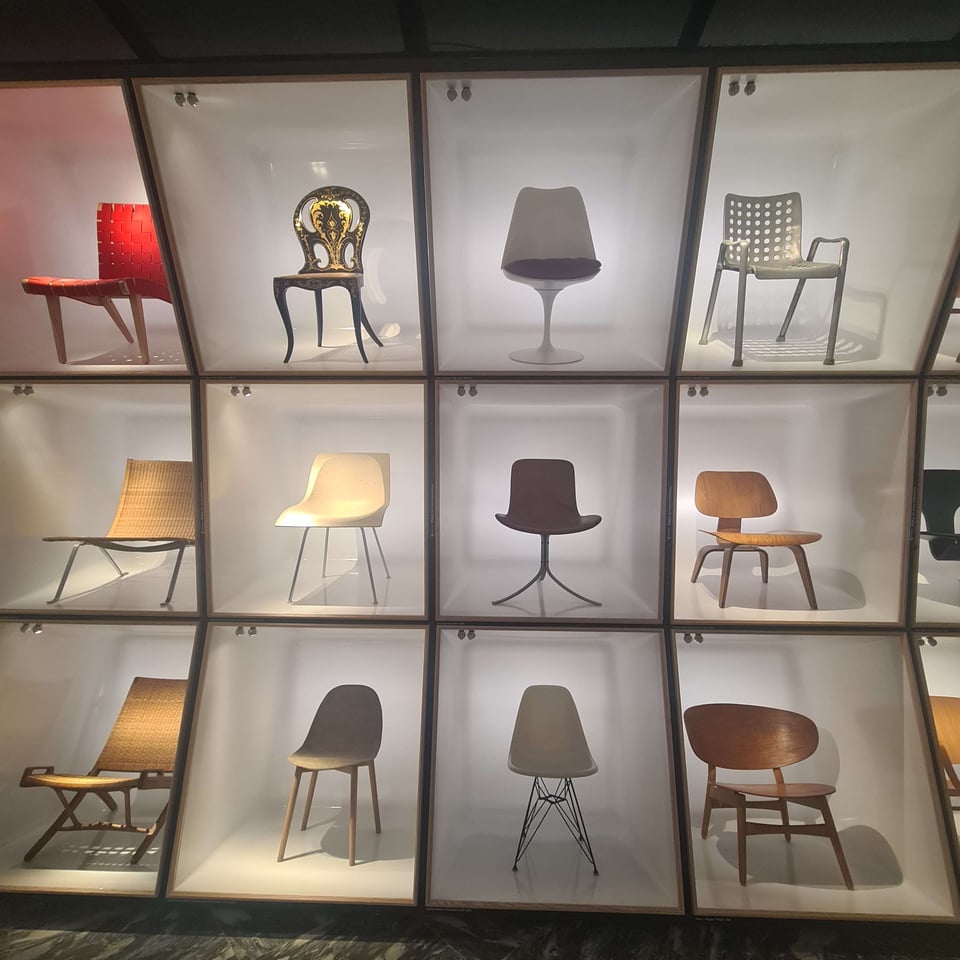Expedition 15
The Bathysphere
Take a seat for the 15th edition of Bathysphere! This week we have an essay from Florence on the history of the gaming chair from Ancient Egypt to 90’s “sensory gaming.” Both Chris and Keith give some great book recommendations, one a series of strange short stories, and the other the unexpected appearance of games in a novel about a family in a small Irish town. Stick to the end for a tennis themed piece in our Retrospective Adventures segment!
As ever, please consider subscribing so that we can continue to explore the video game oceans. It costs £25 a year or £3 per month and you also get access to our archive of previous expeditions.
The Bathysphere crew
Christian Donlan
Florence Smith Nicholls
Keith Stuart
Contact us at bathyspherecrew@gmail.com
Delightful games

Rooftops & Alleys is a game about parkour, which is a sport I am far, far too old and naff for. But that’s why there are games! I’ll keep this brief, but what I think is really special about this game is the control system, which is complex and slightly counter-intuitive at first. As an example, you need to do things with the triggers that feel very different to ways I’ve used the triggers before.
Anyway, I’m learning to swim at the moment, and so much of learning a physical process is about breaking it down into little pieces that are invisible unless you’re new at all this and are specifically looking for them. I imagine that’s what learning parkour is like - and it’s definitely what learning Rooftops & Alleys is like. CD
Interesting things

This week I read Valuable Humans in Transit, by QNTM. It’s a selection of short stories that skew weird and futuristic, and are happy to play around with styles and different ways of being. My favourite of the collection is probably Lena, a story about a digital snapshot of a human brain and all the quiet horrors it endures as an executable file. It’s told as a Wikipedia entry, which I feel shouldn’t work as well as it does.
As with any book of short stories - Ten Planets by Yuri Herrera is another great example - over time the pleasure comes less from individual stories but more from the fact that there are so many slotted in together. You go on little journeys whenever you turn the page for the next story - actually sometimes you go on pretty long journeys. But then there are threads that connect everything, either on surface terms or in an emerging sense of what the writer is preoccupied by. Reading short stories can often feel like you’re getting a privileged understanding of a writer’s brain much more clearly than when reading a novel? All said, reading books of short stories is pretty ace.
QNTM also made their own Tetris variant BTW. If you haven’t checked it out, it’s definitely worth tracking it down. CD
You know I love a theme, so this week, it’s all about chairs. I’m recommending an open access article by historian Laine Nooney, “A Pedestal, A Table, A Love Letter: Archaeologies of Gender in Videogame History.” This piece looks at how gender itself is an infrastructure that shapes possible game histories, as told through three vignettes about biographical objects from the life of Sierra On-Line co-founder and lead designer Roberta Williams. One of them is about the chair as pedestal in the visual language of games journalism! FSN
I can’t guarantee there will be chairs involved at the Car Boot Casino event happening during the Develop conference next week, but given it's a relaxed social event that involves playing homebrew bluffing games this seems pretty likely. It’s being run by curator Marie Foulston next Tuesday the 8th at the Old Ship Hotel in Brighton, and there is the potential for cursed prizes as well as sedentary fun. FSN
I always appreciate it when a novel that isn’t specifically about games nevertheless includes them in an interesting and authentic way. So I’m going to recommend (rather late) The Bee Sting by Paul Murray, a novel about a family falling apart in a small Irish town. The teenage son, PJ, is a video game player, and though it’s a very minor part of the narrative, his fandom plays a crucial role in the outcome of the story. It’s also a compulsive read, perfect for languid summer weekends. KS
Essay: Take A Seat - A History Of The Gaming Chair

“It is almost easier to build a skyscraper than a chair;” so said architect Ludvig Mies van der Rohe. I saw this quote on a wall at the Design Museum in Copenhagen. Their Danish Modern permanent collection includes the “chair tunnel,” a long room with 125 chairs displayed from floor to ceiling, demonstrating different typologies of 20th century design. Every type of chair you can imagine is represented, but there were some omissions. Why is our friend, the humble gaming chair, not present? Asking this question led me on a deep dive that touches on the Ancient Egyptian board game Senet, the automobile industry, and what “sensory gaming” looked like in the 1990s.